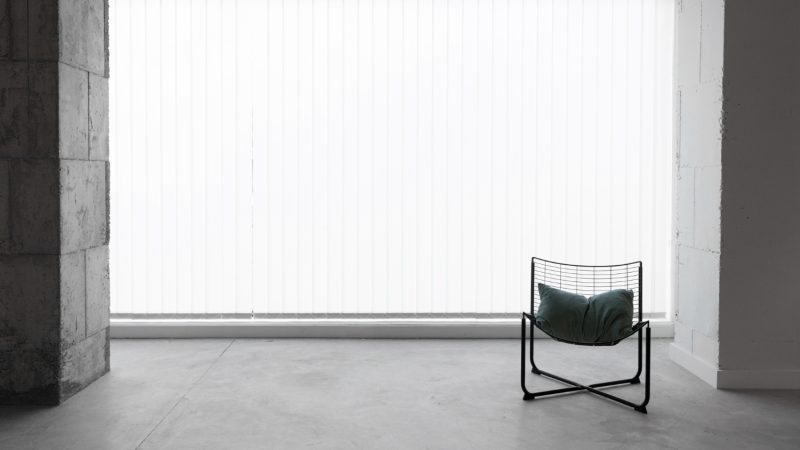Fed up with tripping over clutter and wasting weekends battling overflowing closets? Perhaps the antidote lies in a philosophy as old as time itself: minimalism. But contrary to popular belief, this is not deprivation — minimalism is a conscious shift towards cherishing experiences over possessions.
The principles of minimalism are not rigid rules but a flexible framework for crafting a life you love. It’s about asking, “Does this item add value to my life?” and decluttering with purpose. Imagine a home bathed in sunlight, where every object holds meaning and sparks joy. That’s the magic of minimalism in household organization.
Minimalism in household organization prioritizes quality over quantity, creating a haven of serenity and peace. Breathing easier, freeing up your days, and reconnecting with what truly ignites your soul — these are just a few rewards of embracing minimalism.
Craving a lighter load and a life brimming with intentional moments? Explore the core principles, practical tips for home organization, and the transformative benefits of a simpler life.
Key principles of minimalism
For many, minimalism blossoms from a yearning for something more. Perhaps it comes from the feeling of being buried under possessions, the quiet longing for physical and mental space to breathe, or simply the realization that memories, not things, are the true treasures.
This yearning entertains the question of what truly matters and what nourishes the soul — the very core of the minimalist principles below. The answer often lies in less being more.
Simplifying spaces
You should begin by decluttering, not just your physical space choked with unused gadgets but also your digital inboxes overflowing with distractions and schedules crammed with obligations.
Each unnecessary item shed feels like a weight lifted, creating space for what truly nourishes: meaningful conversations with loved ones, quiet mornings bathed in sunlight, and spontaneous adventures fueled by curiosity.
Prioritization becomes an essential tool. You learn to discern between fleeting desires and genuine needs. This shift is not about sacrifice; it’s about intentionality and simplicity, where every choice becomes a statement of what truly matters.
Mindful consumption
With minimalism, impulsive purchases are replaced by a focus on quality over quantity. You begin to seek experiences and relationships that enrich your soul, not just stuff to accumulate. Consequently, celebrating quality becomes a conscious decision, and each choice resonates with a sense of long-term fulfillment.
Mindful consumption is a liberating journey. Debt becomes a chain to be cast off, not a badge of honor. This lightness fosters a sense of freedom, allowing you to fully focus on what truly moves your soul, unburdened by the weight of the unnecessary. It also extends beyond your personal spaces and touches the world around you.
Functional design
Minimalism whispers magic into furniture, too. Beyond mere aesthetics, minimalist furniture champions utility. Each piece fulfills a specific need, seamlessly blending form and function to create clutter-free spaces that work as hard as they look.
Multifunctional heroes like convertible sofas and hidden storage units keep living areas streamlined and organized. Every piece has a clear purpose, maximizing space and minimizing clutter. The result? A calm, uncluttered space where form seamlessly meets function, and every element serves a practical need.
Benefits of minimalism
Imagine a life unburdened, where less truly becomes more. Minimalism is an intentional approach that reaps rewards across your entire being, from mental clarity to environmental impact. Here are some of the most transformative benefits of a minimalist home:
Less clutter
Picture this: less cleaning, less organizing, and more time for what truly matters. Ditching the excess liberates you from the physical and mental clutter that weighs you down. Once you declutter, you free your space, and your stress levels vanish.
Boosted mental wellness
Minimalism cuts down on distractions, relieves anxieties, and sharpens your focus. You will find yourself living in the moment, attracting the good vibes without all the mental noise. It resets your brain, rediscovering the peace of a decluttered mind.
Enhanced creativity
Minimalism can be your muse if you are feeling drained of creativity. With less visual and mental clutter, your creativity will spark. You will get things done with laser focus, generate ideas effortlessly, and experience the pure joy of being in the flow.
Read more: Smart and Efficient Home Organization: Boost Productivity By Creating Zones
Deeper connections
Minimalism shifts the spotlight to real-life connections rather than shallow social media presence. Minimalism encourages you to prioritize quality time with loved ones, forging deeper friendships and more meaningful interactions. You will find yourself more present in relationships, connecting authentically and building true intimacy.
Elevated financial freedom and sustainability
Less clutter means less spending. Minimalism helps you break free from the consumerism trap, saving money for experiences that truly enrich your life. You will build a more secure future, discover the power of conscious consumption, and reduce your negative impact on the planet.
Practical steps to embrace minimalism
A curated selection of elements can cultivate a serene and sophisticated atmosphere. Minimalism helps you embrace multi-functional furniture, discover organizational storage solutions, and unlock clever and elegant design.
Follow this step-by-step journey and see your home blossom into a haven of both functionality and tranquility.
Step 1: Living rooms
For a serene and stylish living room, focus on clean lines, basic shapes, and neutral colors. This will create a calming and uncluttered atmosphere. To add visual interest without introducing clutter, incorporate texture through rugs, blankets, and wood accents. Mirrors and statement pieces can also be effective.
Read more: Unlocking the Potential of Your Living Room With Functional Zones
Pops of accent color or a monochromatic scheme can add personality to your minimalist living room. Let natural light be your guide, as it will make the space feel open and airy. Finally, don’t forget about storage solutions! They’ll help you keep clutter out of sight and maintain that minimalist vibe.
Step 2: Kitchens
Minimalism in the kitchen is more than aesthetics; it’s a breath of fresh air. Clean lines reign, surfaces whisper silence, and function takes center stage. Pantries and cabinets are storage sanctuaries, housing only the essentials.
Read more: 5 Common Mistakes in Organizing the Kitchen and How to Fix Them
Decluttering keeps the chaos at bay and the vibe harmonious. As for color, white is perfect for expanding space and bouncing light. You can also add pops of color or personality with accessories or artwork.
Step 3: Bedrooms
Minimalist bedrooms used to be all clean lines and beige walls, the kind that lulled you right to sleep. Now, they are about creating a sanctuary that feels just right. Think comfortable textures and warm hues for a cozy nest or unexpected pops of color alongside sleek furniture for a modern, calm vibe.
Read more: How to Overcome Challenges in Bedroom Organization
The key is picking things you love, not just banishing clutter. Minimalism principles encourage making every element count and creating a space that whispers your name. You can easily paint your personal masterpiece one thoughtfully chosen piece at a time and create a minimalist haven that truly reflects you.
Step 4: Bathrooms
Breathe new life into your bathroom with the magic of minimalism. Avoid clutter by embracing clean lines, leaving only items that truly serve a purpose or spark joy. The sleek, uncluttered surfaces will reflect the morning light, nurturing a sense of calm and clarity as you begin your day.
Every element in your minimalist bathroom should earn its place. Opt for storage solutions that seamlessly integrate with the design, keeping essentials tucked away while maintaining effortless aesthetics. Polished hardware and minimalist fixtures add subtle elegance, transforming your bathroom into a serene haven dedicated to well-being.
Read more: Smart and Efficient Home Organization: Boost Productivity By Creating Zones
Step 5: Home offices
Taming the desk jungle and embracing minimalism can unlock surprising productivity in your home office. Shed the distractions of visual noise – banish papers, trinkets, and anything that does not directly fuel your flow. Imagine the blank canvas of a clear desk, inviting focus and fostering a sense of mental clarity.
Every element in your minimalist office should earn its place. Choose ergonomic furniture that supports your well-being while blending seamlessly into the background. Opt for natural light and clean lines, creating a soothing aesthetic that complements your focus without competing for it. Your home office will be a sanctuary for productive action, a space where function complements form.
Read more: The Vital Role of Ergonomic Furniture in Modern Living Spaces
Step 6: Children’s spaces
Avoid the typical toy avalanche and embrace a minimalist haven for your child. Less clutter allows space for imagination to bloom, transforming a simple room into a canvas for endless adventures. Think open shelves housing favorite books and treasured keepsakes, inviting exploration and encouraging a sense of ownership.
In a minimalist children’s space, uncluttered surfaces become open invitations to snuggle in with a favorite book or build fantastical worlds with treasured keepsakes. The serene atmosphere encourages restful sleep and quiet moments of connection.
Tips for maintenance and sustaining minimalism
Transitioning to minimalism can be daunting. These practical tips will equip you to navigate the path of minimalism with ease and grace.
Start small
Do not declutter your entire home overnight; you can start with one room or category of belongings at a time. Remember the golden rule of decluttering: one year of dormancy is a clear sign of retirement. If an item has not seen the light of day in twelve months, express gratitude for its past service and bid it farewell.
Consider it a journey, not a destination
There will be setbacks and temptations along the way of transitioning into a minimalist. Be patient with yourself and celebrate small progress. Embrace experiences that create lasting memories, rather than material things that will eventually depreciate.
Utilize the power of “maybe”
If you are unsure whether you need an item, put it in a designated “maybe” box. Revisit the box later — if its absence goes unnoticed, donate it with confidence. This method is perfect for moments of decluttering indecisiveness.
Categorize and conquer
Dedicate specific storage areas for different categories, like books, electronics, or hobbies. Labeling adds a touch of visual clarity. It’s also beneficial to opt for furniture and items that serve multiple purposes, maximizing space and minimizing clutter.
In conclusion
Minimalism is about recognizing that less can truly be more, replacing clutter with calm and possessions with purpose. With fewer belongings, you will breathe easier, reclaim your hours, and find deeper meaning in experiences, relationships, and the simple joy of living. So, take a deep breath, open your heart to the possibilities, and begin shedding the weight of excess.
If you would like to see more resources on minimalism, check out the Home Organization Science Labs. The lab uses the research of the Institute for Life Management Science to produce courses, certifications, podcasts, videos, and other tools. Visit the Home Organization Science Labs today.
Photo by Freepik


